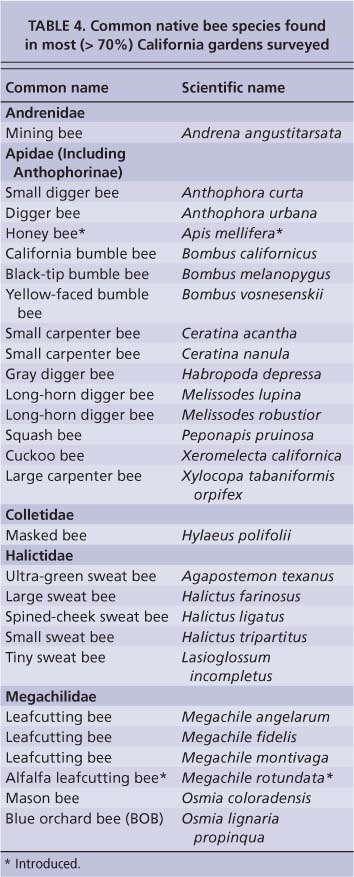
Back in the 2009, a team of University of California scientists, led by Gordon Frankie of UC Berkeley and Robbin Thorp (1933-2019) of UC Davis, wrote this incredible article, "Native Bees are a Rich Natural Resource in Urban California Gardens," published in California Agriculture (UC Agriculture and Natural Resources).
It's an excellent resource.
The abstract:
"Evidence is mounting that pollinators of crop and wildland plants are declining worldwide. Our research group at UC Berkeley and UC Davis conducted a 3-year survey of bee pollinators in seven cities from Northern California to Southern California. Results indicate that many types of urban residential gardens provide floral and nesting resources for the reproduction and survival of bees, especially a diversity of native bees. Habitat gardening for bees, using targeted ornamental plants, can predictably increase bee diversity and abundance, and provide clear pollination benefits."
Jennifer Hernandez, Barbara Ertter, Jaime Pawelek, Sara Witt, Mary Schindler, Rollin Coville, and Victoria Wojcik. Coville provided the images.
"Outdoor urban areas worldwide are known to support a rich diversity of insect life (Frankie and Ehler 1978)," they wrote. "Some insects are undesirable and characterized as pests, such as aphids, snails, earwigs and borers; urban residents are most aware of these. Other urban insects are considered beneficial or aesthetically pleasing, such as ladybird beetles and butterflies; this category includes a rich variety of insects whose roles in gardens go largely unnoticed and are thus underappreciated (Grissell 2001; Tallamy 2009). They regularly visit flowers and pollinate them, an important ecological service."
"We report the results of a 2005-to-2007 survey of bees and their associations with a wide variety of ornamental plant species in seven urban areas, from Northern California to Southern California. While non-native honey bees (Apis mellifera) are common in many gardens, numerous California native bee species also visit urban ornamental flowers. Of about 4,000 bee species known in the entire United States, about 1,600 have been recorded in California."
That deserves to be repeated. Of the 4000 bee species known in the United States, about 1600 reside in California. See some of them listed on the chart above.
Notice it includes the non-native bee, the honey bee, Apis mellfera. It is an "introduced bee," although numerous non-scientists think it's a native. European colonists introduced it to America (in what is now Virginia) in 1622.
The phrase, "Save the (Honey) Bees," became prominent during the colony collapse disorder. But the bees that need saving now are the natives.
If you want to know more about the native bees in California, this book should be in your library: California Bees and Blooms: A Guide for Gardeners and Naturalists by UC-affiliated scientists
Attached Images:
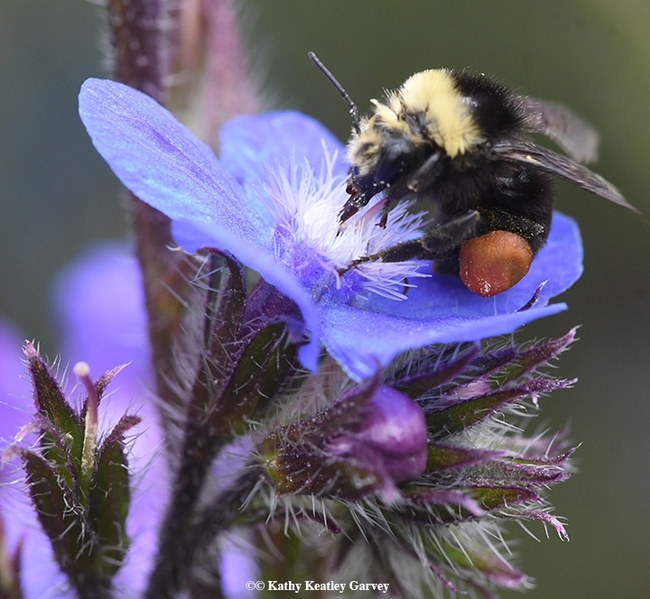
A female yellow-faced bumble bee, Bombus vosnesenskii, foraging on Anchusa azurea at Annie's Annuals and perennials, Richmond. (Photo by Kathy Keatley Garvey)
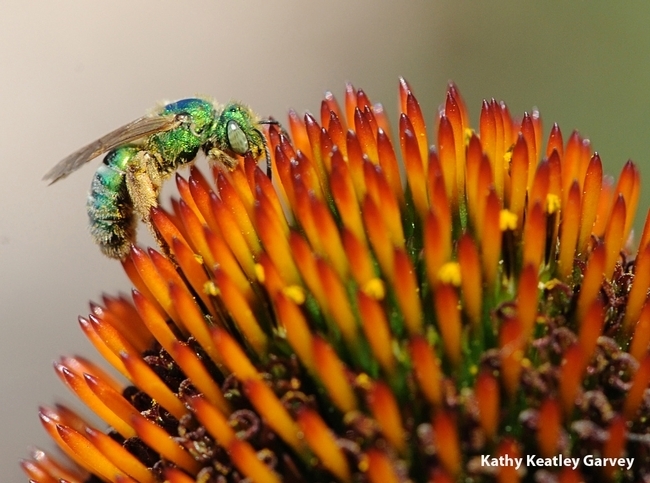
A female metallic green sweat bee, Agapostemon texanus, nectaring on a purple coneflower in a UC Davis garden. (Photo by Kathy Keatley Garvey)
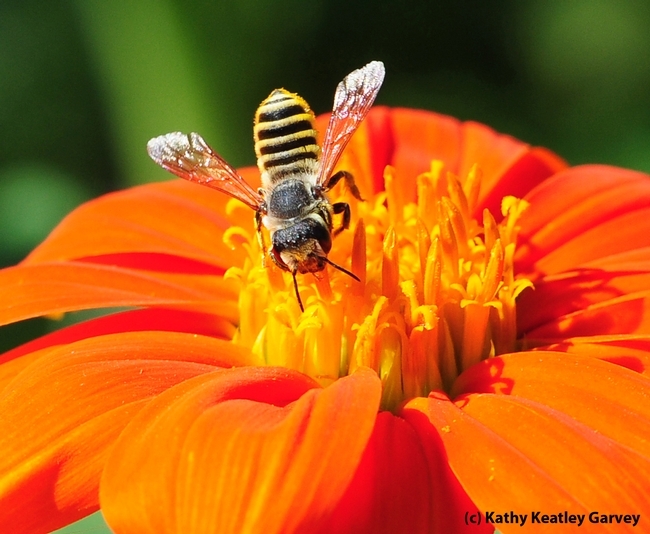
A female leafcutting bee, Megachile fidelis, foraging on a Mexican sunflower, Tithonia rotundifola, in a UC Davis garden. (Photo by Kathy Keatley Garvey)
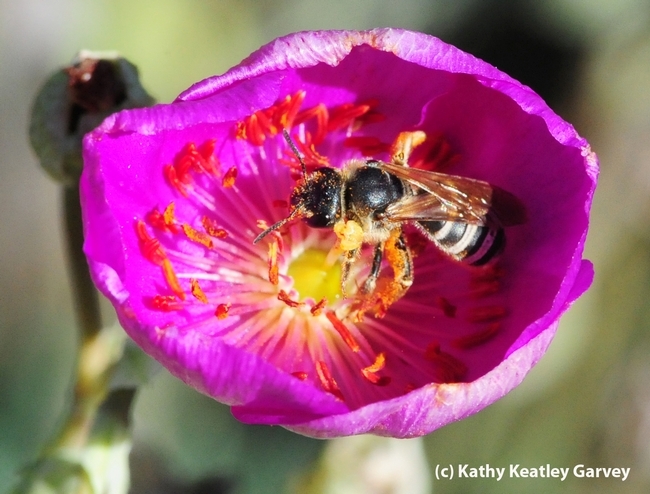
A sweat bee, Halictus farinosus, foraging on rock purslane in a Vacaville garden. (Photo by Kathy Keatley Garvey)
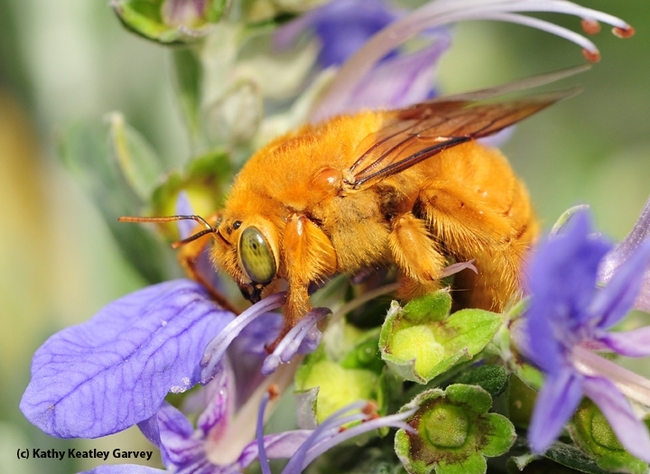
A male Valley carpenter bee, Xylocopa sonorina, foraging on germander, Teucrium fruitcans. (Photo by Kathy Keatley Garvey)
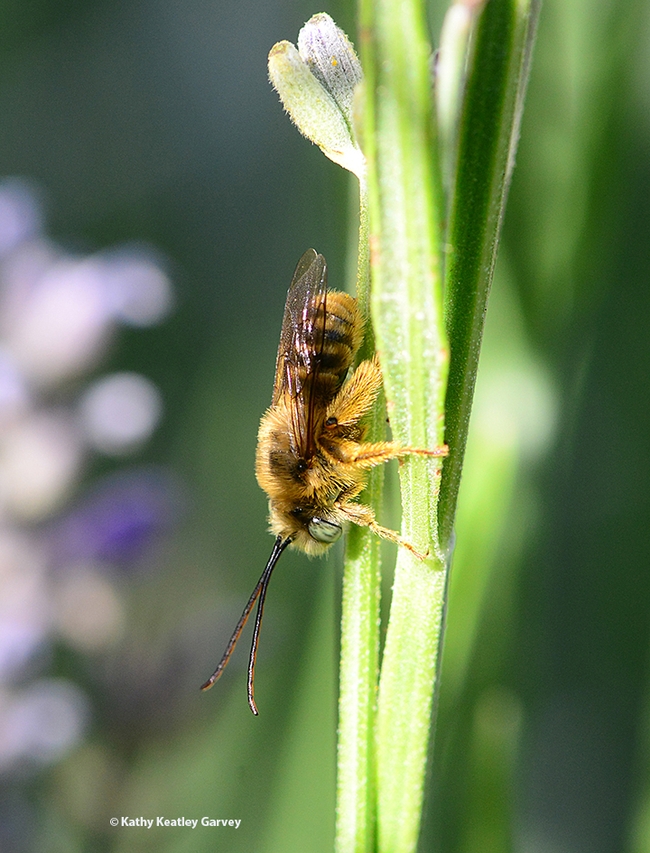
A male longhorned bee, Melissodes agilis, in a Davis garden. (Photo by Kathy Keatley Garvey)